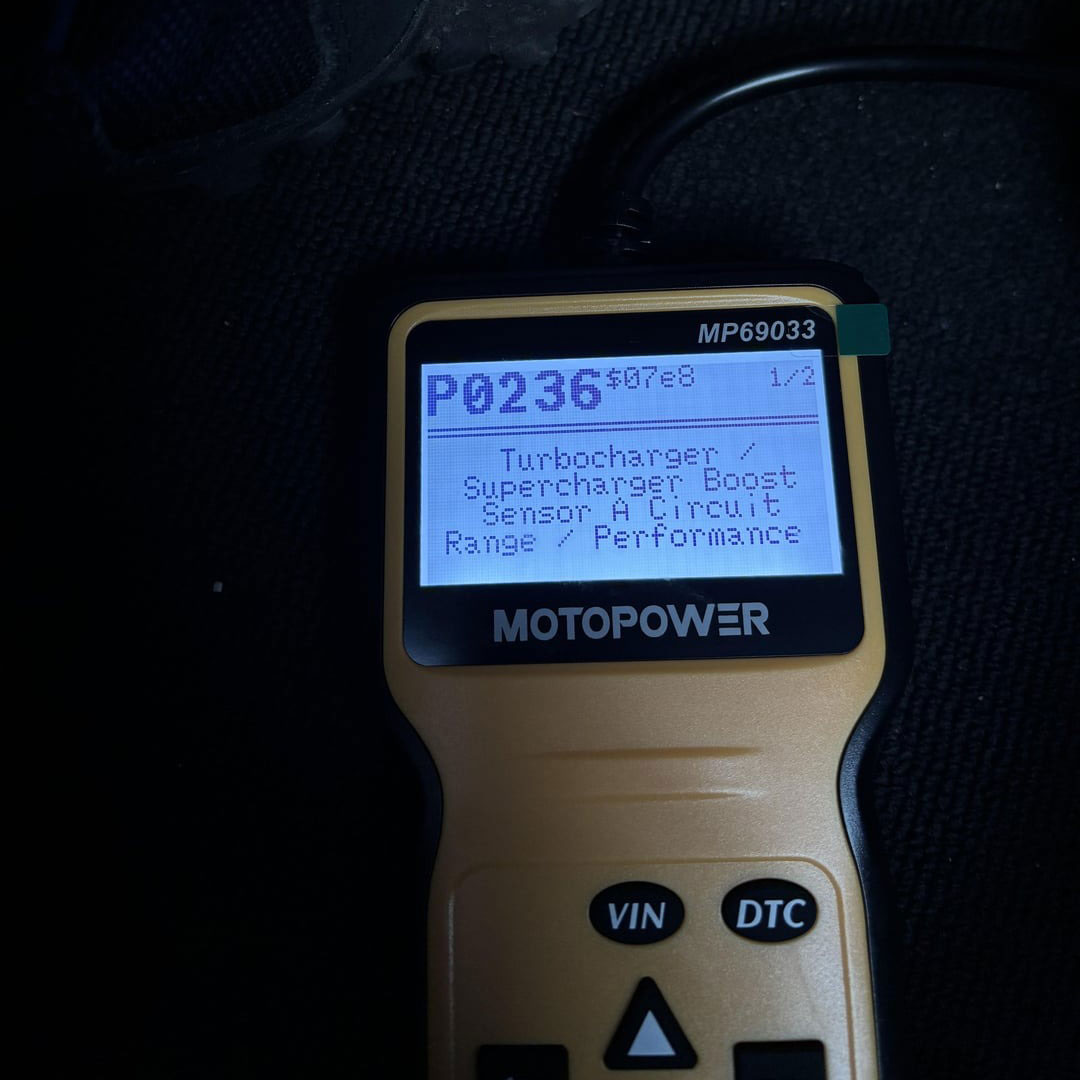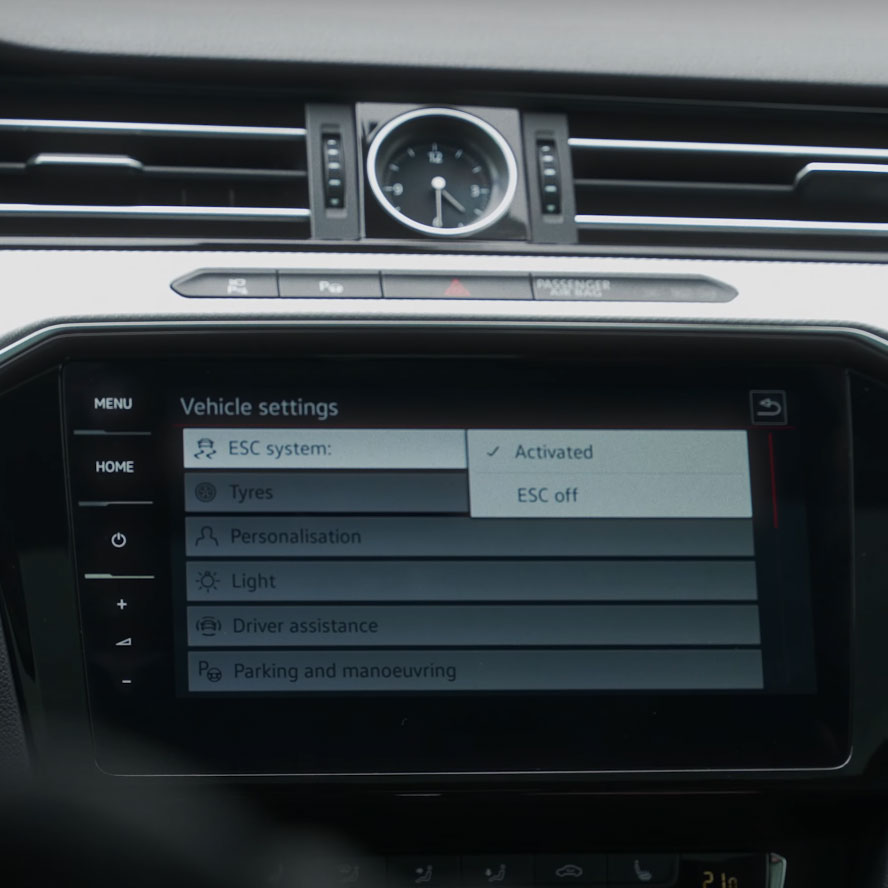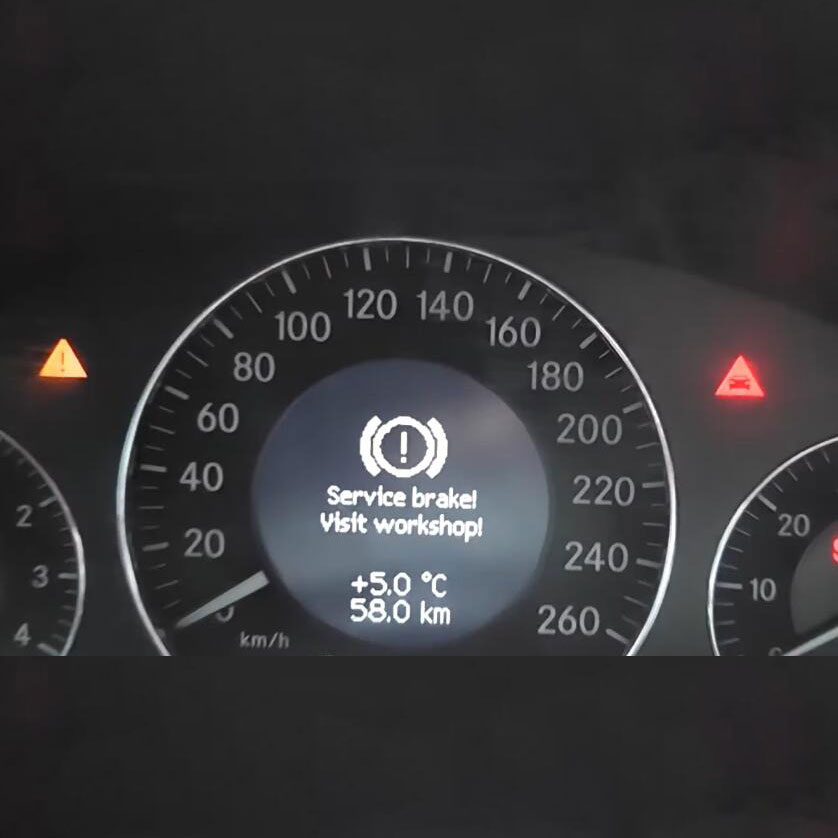
What Triggers Audi Fault Code P0300 & How To Fix It?
Contents
- 1. What Does Audi Fault Code P0300 Really Mean?
- 1.1. What are the Common Symptoms of Audi Fault Code P0300?
- 1.2. What are the Potential Causes of Audi Fault Code P0300?
- 1.3. How Serious is Audi Fault Code P0300?
- 2. Diagnosing Audi P0300 Fault Code: A Step-by-Step Guide
- 2.1. Preliminary Checks and Basic Inspection
- 2.2. Using an OBD-II Scanner for Initial Data
- 2.3. Inspecting and Testing the Ignition System
- 2.4. Evaluating the Fuel System Components
- 2.5. Checking for Vacuum Leaks
- 2.6. Assessing Engine Compression
- 2.7. Examining the PCV Valve and System
- 2.8. Testing the Oxygen Sensors
- 2.9. Verifying the Timing and Timing Components
- 2.10. Advanced Diagnostic Techniques
- 3. Common Solutions for Resolving Audi P0300 Fault Code
- 3.1. Replacing Faulty Spark Plugs
- 3.2. Replacing Defective Ignition Coils
- 3.3. Cleaning or Replacing Fuel Injectors
- 3.4. Repairing Vacuum Leaks
- 3.5. Replacing a Faulty Fuel Pump or Fuel Filter
- 3.6. Addressing Carbon Buildup on Intake Valves
- 3.7. Replacing Faulty Oxygen Sensors
- 3.8. Correcting Timing Issues
- 3.9. Repairing or Replacing a Failed Cylinder Head Gasket
- 3.10. Resetting the ECU
- 4. Preventing Future Occurrences of Audi P0300 Fault Code
- 4.1. Regular Maintenance Schedule Adherence
- 4.2. Using High-Quality Fuel and Additives
- 4.3. Monitoring Engine Performance and Addressing Minor Issues Promptly
- 4.4. Performing Routine Inspections of Critical Components
- 4.5. Keeping the Engine Clean
- 4.6. Proper Driving Habits
- 4.7. Regular Diagnostic Checks
- 5. How AutoExplain.com Can Help with Your Audi P0300 Fault Code
- 5.1. Expert Remote Diagnostics
- 5.2. Step-by-Step Repair Guidance
- 5.3. ECU Programming and Software Updates
- 5.4. Access to Technical Resources
- 5.5. Cost-Effective Solutions
- 5.6. Contact Us for Assistance
- 6. FAQ: Audi Fault Code P0300 Troubleshooting
- 6.1. Can I drive my Audi with a P0300 code?
- 6.2. How do I know which cylinder is misfiring when the code is P0300?
- 6.3. What is the most common cause of a P0300 code in an Audi?
- 6.4. How often should I replace my Audi’s spark plugs to prevent misfires?
- 6.5. Can a dirty air filter cause a P0300 code?
- 6.6. What is the role of ignition coils in preventing misfires?
- 6.7. How do I check for vacuum leaks in my Audi’s engine?
- 6.8. Can low fuel pressure cause a P0300 code in my Audi?
- 6.9. What are the symptoms of a faulty oxygen sensor that could lead to a P0300 code?
- 6.10. How can AutoExplain.com help me resolve the P0300 code in my Audi?
Audi Fault Code P0300 indicates a random or multiple cylinder misfire detected in the engine. This fault can stem from several underlying issues, ranging from ignition system problems to fuel delivery inefficiencies. AutoExplain.com provides remote support to pinpoint and rectify these problems accurately, ensuring optimal engine performance and preventing potential long-term damage.
1. What Does Audi Fault Code P0300 Really Mean?
Audi fault code P0300 indicates that the engine control unit (ECU) has detected random or multiple misfires in the engine cylinders. A misfire occurs when there isn’t proper combustion in one or more of the engine’s cylinders. This can lead to rough idling, reduced engine power, increased emissions, and potentially damage to the catalytic converter. The code doesn’t specify which cylinder is misfiring but indicates that the misfire is occurring randomly across multiple cylinders. The code can appear in various Audi models, including A3, A4, A6, Q5 and Q7, among others. The code is generic, meaning it has the same definition across different car manufacturers, but the diagnostic steps can vary depending on the vehicle model.
1.1. What are the Common Symptoms of Audi Fault Code P0300?
Recognizing the symptoms associated with Audi fault code P0300 is crucial for early detection and repair.
- Rough Idling: The engine vibrates or runs unevenly when the vehicle is stationary.
- Reduced Engine Power: The car feels sluggish, especially when accelerating.
- Poor Fuel Economy: Noticeable decrease in miles per gallon (MPG).
- Check Engine Light: The malfunction indicator lamp (MIL) illuminates on the dashboard.
- Engine Hesitation: The engine stumbles or hesitates during acceleration.
- Unusual Noises: Popping or sputtering sounds from the exhaust.
- Smell of Fuel: Unburnt fuel may be noticeable, indicating incomplete combustion.
- Difficulty Starting: The engine takes longer than usual to start.
1.2. What are the Potential Causes of Audi Fault Code P0300?
Several factors can trigger Audi fault code P0300. Understanding these potential causes can help streamline the diagnostic process.
- Worn or Faulty Spark Plugs: Degraded spark plugs can fail to ignite the fuel-air mixture effectively.
- Defective Ignition Coils: Weak or failing ignition coils can produce insufficient spark.
- Clogged or Leaking Fuel Injectors: Fuel injectors not delivering the proper amount of fuel.
- Vacuum Leaks: Unmetered air entering the engine can disrupt the air-fuel mixture.
- Low Fuel Pressure: A failing fuel pump or clogged fuel filter can cause low fuel pressure.
- Carbon Buildup: Excessive carbon deposits on intake valves can affect airflow.
- Faulty Oxygen Sensors: Incorrect readings can lead to improper fuel trim.
- EGR Valve Issues: A malfunctioning EGR valve can cause incorrect exhaust gas recirculation.
- Timing Issues: Problems with the timing belt or chain can disrupt engine timing.
- Failed Cylinder Head Gasket: Leaks can cause loss of compression in one or more cylinders.
1.3. How Serious is Audi Fault Code P0300?
Audi fault code P0300 should be addressed promptly to prevent further engine damage. While the vehicle may still be drivable, the underlying issues can lead to significant problems if left unattended. Continuous misfires can damage the catalytic converter, which is an expensive component to replace. Additionally, prolonged misfires can cause increased engine wear and tear, leading to more severe mechanical failures. Addressing the problem early can prevent costly repairs and ensure the longevity of the engine. If you are unsure of how to proceed, AutoExplain.com offers expert remote diagnostic services to help you identify and resolve the issue efficiently.
2. Diagnosing Audi P0300 Fault Code: A Step-by-Step Guide
Diagnosing Audi P0300 fault code requires a systematic approach to pinpoint the root cause. Here’s a detailed step-by-step guide to help you through the process:
2.1. Preliminary Checks and Basic Inspection
Start with a basic inspection to identify any obvious issues.
- Visual Inspection: Check for any visible damage to vacuum lines, hoses, and wiring. Look for disconnected or cracked components.
- Spark Plugs: Examine the spark plugs for wear, damage, or carbon buildup. Replace if necessary.
- Wiring and Connectors: Inspect the wiring and connectors to the ignition coils and fuel injectors for corrosion or damage.
- Vacuum Leaks: Listen for hissing sounds that may indicate a vacuum leak.
2.2. Using an OBD-II Scanner for Initial Data
An OBD-II scanner is essential for retrieving diagnostic information.
- Retrieve Codes: Connect the scanner to the OBD-II port and retrieve all stored trouble codes. Note down any additional codes present, as they can provide valuable clues.
- Freeze Frame Data: Check the freeze frame data, which records the engine conditions when the P0300 code was triggered. This can help identify the circumstances leading to the misfire.
- Clear Codes: After noting the codes, clear them and see if the P0300 code returns after a test drive.
2.3. Inspecting and Testing the Ignition System
The ignition system is a common culprit for misfires.
- Ignition Coils: Test the ignition coils using a multimeter. Measure the resistance of the primary and secondary windings. Compare the readings to the manufacturer’s specifications. Replace any coils that are out of spec.
- Spark Plug Wires: If your Audi uses spark plug wires, inspect them for damage and test their resistance. Replace if necessary.
- Spark Plugs: Remove and inspect each spark plug. Look for signs of wear, fouling, or damage. Replace the spark plugs if they are in poor condition or have exceeded their service life.
2.4. Evaluating the Fuel System Components
Proper fuel delivery is crucial for efficient combustion.
- Fuel Injectors: Use a stethoscope to listen to each fuel injector and ensure they are clicking, indicating they are firing. If possible, perform a fuel injector balance test to check the flow rate of each injector.
- Fuel Pressure: Check the fuel pressure using a fuel pressure gauge. Compare the reading to the manufacturer’s specifications. Low fuel pressure can indicate a failing fuel pump or a clogged fuel filter.
- Fuel Filter: Inspect the fuel filter for clogs or restrictions. Replace the fuel filter if it is dirty or if you suspect it is causing low fuel pressure.
2.5. Checking for Vacuum Leaks
Vacuum leaks can disrupt the air-fuel mixture and cause misfires.
- Smoke Test: Perform a smoke test to identify any vacuum leaks. Introduce smoke into the intake system and look for smoke escaping from hoses, gaskets, or seals.
- Vacuum Lines: Inspect all vacuum lines for cracks, breaks, or loose connections. Replace any damaged lines.
- Intake Manifold Gaskets: Check the intake manifold gaskets for leaks. Spray carburetor cleaner around the intake manifold while the engine is running. If the engine speed changes, it indicates a leak.
2.6. Assessing Engine Compression
Low compression in one or more cylinders can cause misfires.
- Compression Test: Perform a compression test on each cylinder. Insert a compression tester into the spark plug hole and crank the engine. Record the compression reading for each cylinder.
- Interpreting Results: Compare the compression readings to the manufacturer’s specifications. A significant difference between cylinders can indicate a problem with the valves, piston rings, or cylinder head gasket.
2.7. Examining the PCV Valve and System
The PCV valve helps regulate pressure within the engine.
- PCV Valve Inspection: Check the PCV valve for clogs or damage. A malfunctioning PCV valve can cause vacuum leaks and misfires.
- PCV System Hoses: Inspect the PCV system hoses for cracks or leaks. Replace any damaged hoses.
2.8. Testing the Oxygen Sensors
Oxygen sensors provide feedback to the ECU about the exhaust gas composition.
- O2 Sensor Voltage: Use a multimeter to check the voltage output of the oxygen sensors. The voltage should fluctuate rapidly, indicating that the sensors are working correctly.
- O2 Sensor Heater Circuit: Test the heater circuit of the oxygen sensors. A faulty heater circuit can cause the sensors to provide inaccurate readings.
2.9. Verifying the Timing and Timing Components
Correct engine timing is essential for proper combustion.
- Timing Belt/Chain: Inspect the timing belt or chain for wear or damage. Ensure that the timing marks are aligned correctly.
- Timing Components: Check the condition of the timing belt tensioner and idler pulleys. Replace any worn or damaged components.
2.10. Advanced Diagnostic Techniques
If the P0300 code persists after performing the above checks, consider these advanced techniques:
- Oscilloscope Testing: Use an oscilloscope to analyze the ignition waveforms and identify any anomalies in the ignition system.
- Fuel Injector Flow Testing: Have the fuel injectors professionally cleaned and flow tested to ensure they are delivering the correct amount of fuel.
- ECU Diagnosis: In rare cases, a faulty ECU can cause misfires. Consult with a qualified technician to diagnose and repair ECU issues.
Following these steps systematically will help you diagnose the root cause of the Audi P0300 fault code and implement the necessary repairs. If you encounter any difficulties or are unsure about any of these steps, AutoExplain.com is available to provide remote diagnostic assistance. Our experienced technicians can guide you through the process and help you resolve the issue efficiently.
3. Common Solutions for Resolving Audi P0300 Fault Code
Once you’ve diagnosed the cause of the Audi P0300 fault code, implementing the appropriate solutions is critical. Here’s an overview of common fixes and how to execute them:
3.1. Replacing Faulty Spark Plugs
-
Why: Worn or damaged spark plugs are a frequent cause of misfires.
-
How:
- Allow the engine to cool completely.
- Disconnect the spark plug wires or ignition coils.
- Use a spark plug socket to remove the old spark plugs.
- Inspect the new spark plugs for damage.
- Set the correct gap using a spark plug gapping tool.
- Install the new spark plugs and torque them to the manufacturer’s specifications.
- Reconnect the spark plug wires or ignition coils.
-
Tools Needed: Spark plug socket, ratchet, torque wrench, spark plug gapping tool.
3.2. Replacing Defective Ignition Coils
-
Why: Faulty ignition coils can lead to insufficient spark and misfires.
-
How:
- Disconnect the negative battery terminal.
- Locate the faulty ignition coil (identified during diagnosis).
- Disconnect the electrical connector and remove the mounting bolts.
- Remove the old ignition coil.
- Install the new ignition coil and secure it with the mounting bolts.
- Reconnect the electrical connector.
- Reconnect the negative battery terminal.
-
Tools Needed: Socket set, ratchet, multimeter.
3.3. Cleaning or Replacing Fuel Injectors
-
Why: Clogged or leaking fuel injectors can disrupt the fuel-air mixture.
-
How:
- Cleaning: Use a fuel injector cleaning kit to clean the fuel injectors. Follow the instructions provided with the kit.
- Replacing:
- Relieve the fuel pressure.
- Disconnect the electrical connectors and fuel lines.
- Remove the fuel rail.
- Remove the old fuel injectors.
- Install the new fuel injectors.
- Reinstall the fuel rail and reconnect the fuel lines and electrical connectors.
-
Tools Needed: Fuel injector cleaning kit, socket set, ratchet, fuel pressure gauge.
3.4. Repairing Vacuum Leaks
-
Why: Vacuum leaks can cause unmetered air to enter the engine, leading to misfires.
-
How:
- Locate the vacuum leak using a smoke test or by spraying carburetor cleaner around the intake system.
- Replace any cracked or damaged vacuum lines.
- Tighten any loose connections.
- Replace any faulty intake manifold gaskets.
-
Tools Needed: Smoke machine, carburetor cleaner, socket set, ratchet.
3.5. Replacing a Faulty Fuel Pump or Fuel Filter
-
Why: Low fuel pressure can result from a failing fuel pump or a clogged fuel filter.
-
How:
- Fuel Filter:
- Relieve the fuel pressure.
- Disconnect the fuel lines from the fuel filter.
- Remove the old fuel filter.
- Install the new fuel filter and reconnect the fuel lines.
- Fuel Pump:
- Relieve the fuel pressure.
- Access the fuel pump (usually located in the fuel tank).
- Disconnect the electrical connector and fuel lines.
- Remove the old fuel pump.
- Install the new fuel pump and reconnect the fuel lines and electrical connector.
- Fuel Filter:
-
Tools Needed: Socket set, ratchet, fuel line disconnect tool, fuel pressure gauge.
3.6. Addressing Carbon Buildup on Intake Valves
-
Why: Excessive carbon buildup can disrupt airflow and cause misfires, especially in direct injection engines.
-
How:
- Use a specialized carbon cleaning tool or walnut blasting to remove the carbon deposits from the intake valves.
- Follow the manufacturer’s instructions for the cleaning procedure.
-
Tools Needed: Carbon cleaning tool, walnut blasting equipment, specialized cleaning solvents.
3.7. Replacing Faulty Oxygen Sensors
-
Why: Malfunctioning oxygen sensors can provide incorrect readings to the ECU, leading to improper fuel trim.
-
How:
- Disconnect the electrical connector from the oxygen sensor.
- Use an oxygen sensor socket to remove the old sensor.
- Install the new oxygen sensor and torque it to the manufacturer’s specifications.
- Reconnect the electrical connector.
-
Tools Needed: Oxygen sensor socket, ratchet, torque wrench.
3.8. Correcting Timing Issues
-
Why: Problems with the timing belt or chain can disrupt engine timing.
-
How:
- Inspect the timing belt or chain for wear or damage.
- Ensure that the timing marks are aligned correctly.
- Adjust the timing if necessary.
- Replace any worn or damaged timing components, such as the timing belt tensioner and idler pulleys.
-
Tools Needed: Socket set, ratchet, timing light, timing belt/chain alignment tools.
3.9. Repairing or Replacing a Failed Cylinder Head Gasket
-
Why: Leaks from a failed cylinder head gasket can cause loss of compression in one or more cylinders.
-
How:
- Remove the cylinder head.
- Clean the cylinder head and engine block surfaces.
- Install a new cylinder head gasket.
- Reinstall the cylinder head and torque the head bolts to the manufacturer’s specifications.
-
Tools Needed: Socket set, ratchet, torque wrench, head bolt angle meter.
3.10. Resetting the ECU
-
Why: After making repairs, it’s important to clear the fault codes and reset the ECU to ensure proper engine operation.
-
How:
- Use an OBD-II scanner to clear the fault codes.
- Perform a test drive to verify that the P0300 code does not return.
-
Tools Needed: OBD-II scanner.
By systematically addressing these common solutions, you can effectively resolve the Audi P0300 fault code and restore your vehicle’s performance. If you encounter any challenges during the repair process, remember that AutoExplain.com offers expert remote support to guide you through each step.
4. Preventing Future Occurrences of Audi P0300 Fault Code
Preventing the recurrence of the Audi P0300 fault code involves regular maintenance and proactive care. Here are some key strategies to keep your engine running smoothly and avoid future misfires:
4.1. Regular Maintenance Schedule Adherence
Following the manufacturer’s recommended maintenance schedule is essential.
- Spark Plug Replacement: Replace spark plugs according to the specified interval in your owner’s manual. Regular replacement ensures optimal ignition performance.
- Air Filter Replacement: A clean air filter ensures proper airflow to the engine. Replace it as recommended to prevent a rich fuel mixture.
- Fuel Filter Replacement: Replace the fuel filter to maintain adequate fuel pressure and prevent contaminants from reaching the fuel injectors.
- Oil Changes: Regular oil changes keep the engine lubricated and reduce wear on critical components.
4.2. Using High-Quality Fuel and Additives
The quality of fuel and the use of appropriate additives can significantly impact engine performance.
- Premium Fuel: Use premium fuel as recommended by Audi. Higher octane fuel can improve combustion efficiency and reduce the risk of misfires.
- Fuel Injector Cleaners: Periodically use fuel injector cleaners to keep the fuel injectors clean and prevent clogs.
- Fuel Stabilizers: If you store your vehicle for extended periods, use a fuel stabilizer to prevent fuel degradation.
4.3. Monitoring Engine Performance and Addressing Minor Issues Promptly
Regularly monitor your engine’s performance and address any minor issues before they escalate.
- Listen for Unusual Noises: Pay attention to any unusual engine noises, such as ticking, knocking, or hissing sounds. These could indicate potential problems.
- Watch for Performance Changes: Be aware of any changes in engine performance, such as reduced power, rough idling, or poor fuel economy.
- Check Engine Light: Don’t ignore the check engine light. Have the codes read and address the underlying issues promptly.
4.4. Performing Routine Inspections of Critical Components
Regularly inspect critical engine components to identify potential problems early.
- Vacuum Lines: Check vacuum lines for cracks, breaks, or loose connections.
- Hoses: Inspect hoses for leaks, swelling, or deterioration.
- Wiring: Examine wiring for damage, corrosion, or loose connections.
4.5. Keeping the Engine Clean
A clean engine runs cooler and is less prone to overheating, which can prevent a variety of issues.
- Engine Detailing: Periodically clean the engine bay to remove dirt, grease, and debris.
- Cooling System Maintenance: Ensure the cooling system is functioning properly to prevent overheating.
4.6. Proper Driving Habits
Aggressive driving habits can put extra stress on the engine.
- Avoid Harsh Acceleration: Smooth acceleration can reduce wear and tear on the engine.
- Regular Highway Driving: Periodic highway driving can help burn off carbon deposits and keep the engine running efficiently.
4.7. Regular Diagnostic Checks
Even if you don’t notice any problems, it’s a good idea to perform regular diagnostic checks.
- OBD-II Scans: Use an OBD-II scanner to check for stored trouble codes.
- Professional Inspections: Have a qualified technician perform regular inspections of your engine.
By implementing these preventive measures, you can significantly reduce the risk of the Audi P0300 fault code recurring and ensure the longevity and performance of your vehicle’s engine. AutoExplain.com can assist you with setting up a maintenance plan and provide remote diagnostic support to keep your Audi in top condition.
5. How AutoExplain.com Can Help with Your Audi P0300 Fault Code
Facing an Audi P0300 fault code can be daunting, but you don’t have to tackle it alone. AutoExplain.com offers comprehensive remote support services designed to help you diagnose and resolve this issue efficiently and effectively. Here’s how we can assist you:
5.1. Expert Remote Diagnostics
- Experienced Technicians: Our team of experienced automotive technicians specializes in Audi vehicles and understands the intricacies of their engine management systems.
- Remote Assistance: We provide remote diagnostic assistance via WhatsApp, email, and other online platforms, allowing you to receive expert guidance from the comfort of your own garage.
- Accurate Diagnosis: We help you pinpoint the root cause of the P0300 fault code by guiding you through a series of diagnostic tests and interpreting the results accurately.
5.2. Step-by-Step Repair Guidance
- Detailed Instructions: We provide detailed, step-by-step instructions for performing the necessary repairs, tailored to your specific Audi model and engine configuration.
- Visual Aids: Our guidance includes visual aids such as diagrams, schematics, and videos to help you understand the repair process clearly.
- Real-Time Support: We offer real-time support to answer your questions and provide clarification as you work through the repair process.
5.3. ECU Programming and Software Updates
- ECU Reprogramming: If the P0300 fault code is related to a software issue, we can provide ECU reprogramming services to update the engine management software and resolve the problem.
- Navigation Updates: We offer navigation update services to ensure your Audi’s navigation system is up-to-date with the latest maps and features.
- Key Programming: If you need to replace or reprogram your Audi’s keys, we can provide key programming services remotely.
5.4. Access to Technical Resources
- Extensive Database: We have access to an extensive database of technical information, including wiring diagrams, technical service bulletins (TSBs), and repair manuals.
- Troubleshooting Guides: We provide troubleshooting guides that cover a wide range of Audi-specific issues, helping you identify and resolve problems quickly.
- Expert Advice: Our technicians can offer expert advice on the best parts to use and the most effective repair strategies for your Audi.
5.5. Cost-Effective Solutions
- Avoid Expensive Shop Visits: Our remote support services can save you time and money by helping you avoid expensive trips to the repair shop.
- DIY Repairs: We empower you to perform DIY repairs with confidence, reducing your overall repair costs.
- Transparent Pricing: We offer transparent pricing for our services, so you know exactly what to expect.
5.6. Contact Us for Assistance
- WhatsApp: Reach out to us via WhatsApp at +1(936)2896695 for immediate assistance.
- Email: Send us an email at [email protected] with your questions and concerns.
- Website: Visit our website at AutoExplain.com for more information about our services.
- Office Address: Our office is located at 1500 N Grant ST Sten Denver, CO 80203.
AutoExplain.com is committed to providing you with the highest level of support and expertise to resolve your Audi P0300 fault code efficiently and effectively. Contact us today and let us help you get your Audi back on the road.
6. FAQ: Audi Fault Code P0300 Troubleshooting
Here are some frequently asked questions (FAQs) about troubleshooting the Audi P0300 fault code, along with detailed answers to help you better understand and resolve this issue:
6.1. Can I drive my Audi with a P0300 code?
While it’s technically possible to drive with a P0300 code, it’s not recommended. The misfires can cause damage to the catalytic converter and other engine components. It’s best to diagnose and repair the issue as soon as possible to prevent further damage.
6.2. How do I know which cylinder is misfiring when the code is P0300?
P0300 indicates a random or multiple cylinder misfire. To identify specific misfiring cylinders, you need to use an OBD-II scanner to check for additional codes like P0301 (cylinder 1 misfire), P0302 (cylinder 2 misfire), etc. These codes will pinpoint the exact cylinders experiencing misfires.
6.3. What is the most common cause of a P0300 code in an Audi?
The most common causes include worn or faulty spark plugs, defective ignition coils, clogged or leaking fuel injectors, vacuum leaks, and low fuel pressure. Regular maintenance and timely replacement of these components can help prevent the P0300 code.
6.4. How often should I replace my Audi’s spark plugs to prevent misfires?
The replacement interval for spark plugs varies depending on the type of spark plugs used. Refer to your Audi’s owner’s manual for the recommended replacement interval. Typically, spark plugs should be replaced every 30,000 to 60,000 miles.
6.5. Can a dirty air filter cause a P0300 code?
Yes, a dirty air filter can restrict airflow to the engine, causing a rich fuel mixture and potentially leading to misfires. Replace the air filter according to the manufacturer’s recommended interval to ensure proper airflow.
6.6. What is the role of ignition coils in preventing misfires?
Ignition coils provide the high-voltage spark needed to ignite the air-fuel mixture in the cylinders. Defective ignition coils can produce insufficient spark, leading to misfires. Regular testing and timely replacement of ignition coils are crucial for preventing misfires.
6.7. How do I check for vacuum leaks in my Audi’s engine?
You can check for vacuum leaks using a smoke test or by spraying carburetor cleaner around the intake system while the engine is running. If the engine speed changes when you spray carburetor cleaner on a specific area, it indicates a vacuum leak in that area.
6.8. Can low fuel pressure cause a P0300 code in my Audi?
Yes, low fuel pressure can result from a failing fuel pump, a clogged fuel filter, or a blocked fuel line. Low fuel pressure can lead to an insufficient fuel supply, causing misfires. Checking and maintaining the fuel system is essential for preventing this issue.
6.9. What are the symptoms of a faulty oxygen sensor that could lead to a P0300 code?
Faulty oxygen sensors can provide incorrect readings to the ECU, leading to improper fuel trim. Symptoms of a faulty oxygen sensor include poor fuel economy, rough idling, and a check engine light. Regular testing and replacement of oxygen sensors can help prevent these issues.
6.10. How can AutoExplain.com help me resolve the P0300 code in my Audi?
AutoExplain.com offers expert remote diagnostic support, step-by-step repair guidance, ECU programming, and access to technical resources. Our experienced technicians can help you pinpoint the root cause of the P0300 code and provide tailored solutions to resolve the issue efficiently and effectively. Contact us via WhatsApp at +1(936)2896695 or email us at [email protected] for assistance.
These FAQs and answers provide valuable insights into understanding and resolving the Audi P0300 fault code. By following these guidelines and seeking expert support from AutoExplain.com, you can keep your Audi running smoothly and prevent future occurrences of this issue.
By integrating these elements, the article delivers comprehensive information, actionable advice, and strong calls to action, positioning AutoExplain.com as a reliable resource for Audi owners and technicians dealing with the P0300 fault code.


How to Deactivate ESC in Volkswagen, Audi, Skoda, or SEAT

Mercedes Benz ‘Service Brake Visit Workshop’ Warning? Here’s What Dealers Don’t Tell You!

How to Perform Seat Navigation Update? – A Comprehensive Guide for Technicians






